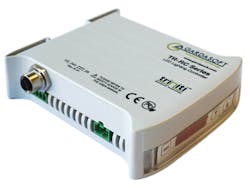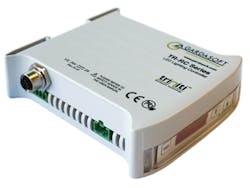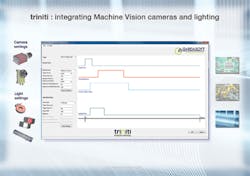Lighting and Illumination: Intelligent lighting aims to simplify machine vision design
Choosing the correct type of lighting is a critical task in any vision system design. Once a particular light has been chosen, however, the systems integrator is faced with ensuring that the light will operate predictably and, if strobed, will be perfectly synchronized with the exposure time of the camera.
Currently, to accomplish this task, lighting controllers are typically employed to ensure that the correct current and timing controls are applied to the lights. However, vision applications are developing in such a way that they are demanding advances in such lighting control and easy integration of lighting within overall vision system design software.
"While lighting controllers prove useful," says John Merva, Vice President, North America at Gardasoft Vision (Cambridge, England;www.gardasoft.com), "current approaches require that systems developers understand the specific characteristics of the lights themselves, particularly when producing high reliability or high performance systems."
These characteristics include the current required by the light, its duty cycle and the current required to produce a given brightness. Once such parameters are known, the lighting controller can be programmed to produce the correct type of illumination in either constant illumination or strobed (overdriven) mode. If used in strobed mode, developers are then faced with ensuring that the camera exposure and timing will be properly synchronized with the lighting.
To address these challenges, Gardasoft Vision has developed its Triniti technology, a patented method of adding intelligence and integration to machine vision lighting products. Triniti provides integration to industry standard image processing packages and smart cameras. It achieves this by integrating a Triniti Chip in each light and providing integrated communications from the light to the controller. Integration into image processing hardware is provided through software and industry standard protocols such as GigE Vision.
A Triniti Chip is built into each light by the manufacturer. The Chip holds the fixed and variable data and provides communications to a lighting controller. This includes fixed information about the light, such as the model number and electrical characteristics and variable data such as the conditions in which the light has been used. The Triniti Chip can also interface into a number of sensors in the light, such as temperature and intensity sensors.
At November's VISION Show in Stuttgart, Germany, CCS Inc. (Kyoto, Japan,www.ccs-grp.com) and Smart Vision Lights (Muskegon, MI, USA; www.smartvisionlights.com) will debut a range of LED illumination products incorporating the Triniti Chip. As well, Gardasoft will announce a controller compatible with these lights based on the Triniti technology.
For developers wishing to incorporate these intelligent lighting products into their machine vision products, Gardasoft will offer an application programming interface (API). This API is a .NET component that can be integrated into any Windows-based development language such as C++ to expose the type of intelligent lighting controller and intelligent lighting product along with their control parameters and characteristics.
Developers can use software packages such as Common Vision Blox from Stemmer Imaging (Puchheim, Germany;www.stemmer-imaging.de), HALCON from MVTec Software (Munich, Germany; www.mvtec.com) and VisionPro from Cognex (Natick, MA, USA; www.cognex) to incorporate both image processing and lighting control into their systems. For developers using LabVIEW from National Instruments (Austin, TX, USA; www.ni.com), Gardasoft will offer specific Virtual Instruments (VIs) that allow controller and lighting parameters to be programmed in a graphical manner. In this way, camera, image processing and lighting control can be interfaced at the application software level allowing a developer to visualize the operation of the complete imaging system.
"For example, a timing diagram showing the timing of the trigger source, camera exposure time and lighting pulses can be shown on one screen to make it easier for developers to diagnose timing issues," says Peter Bhagat, CEO of Gardasoft Vision.
"This will alleviate the need to use two disparate software packages and ensure that the camera exposure and timing will be properly synchronized with the lighting. All performance criteria such as duty cycle and overdriving capability are automatically calculated for the user."
Vision Systems Articles Archives


